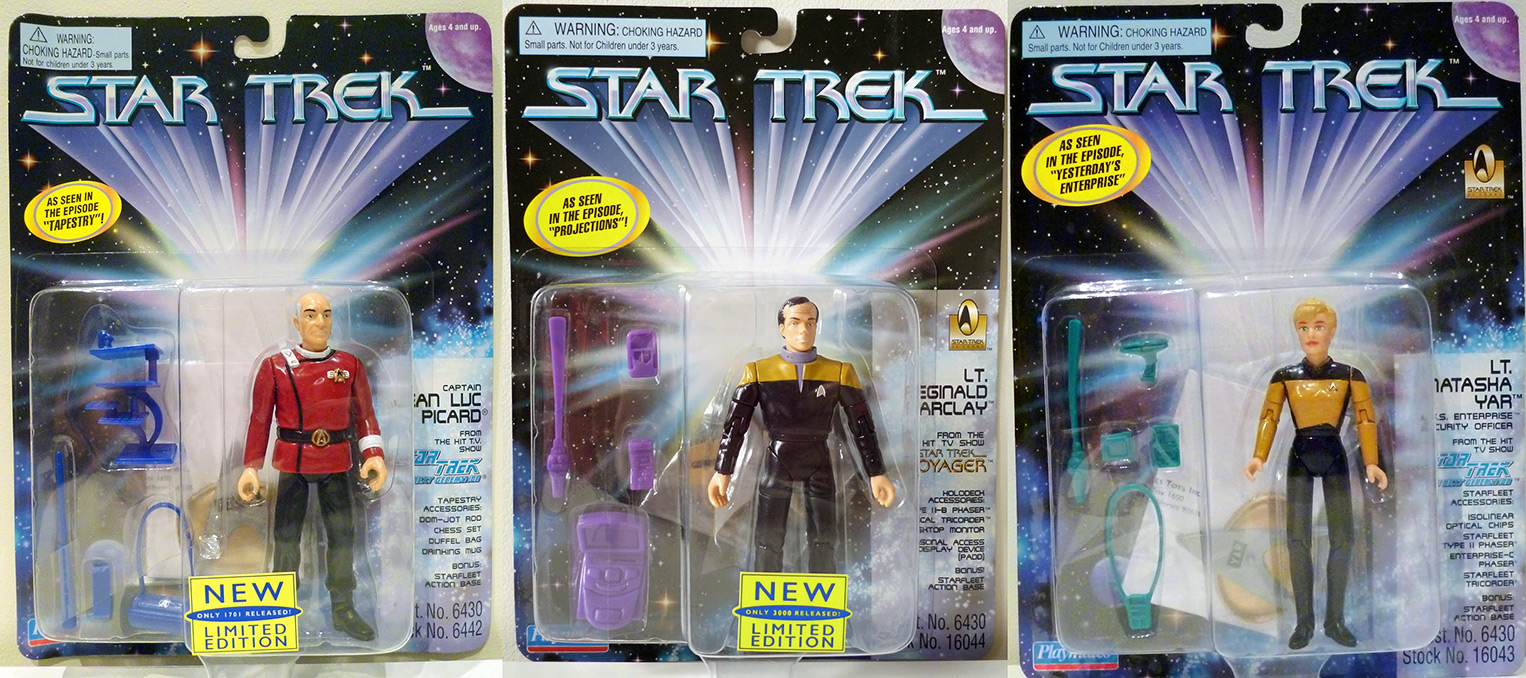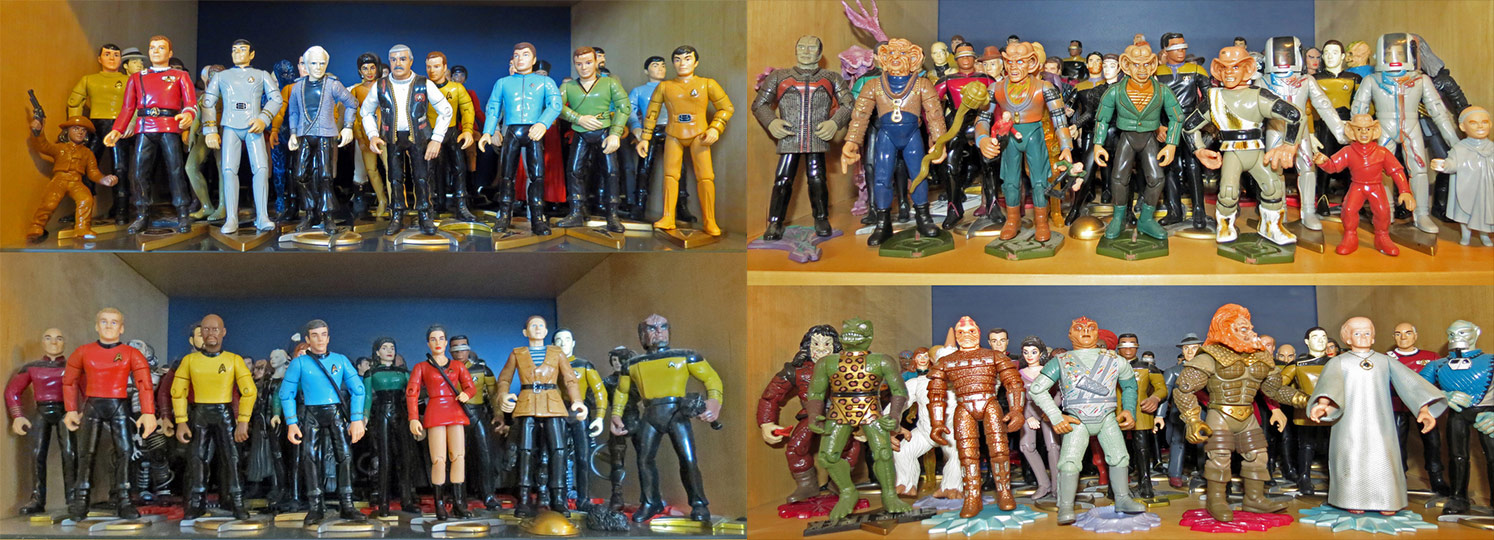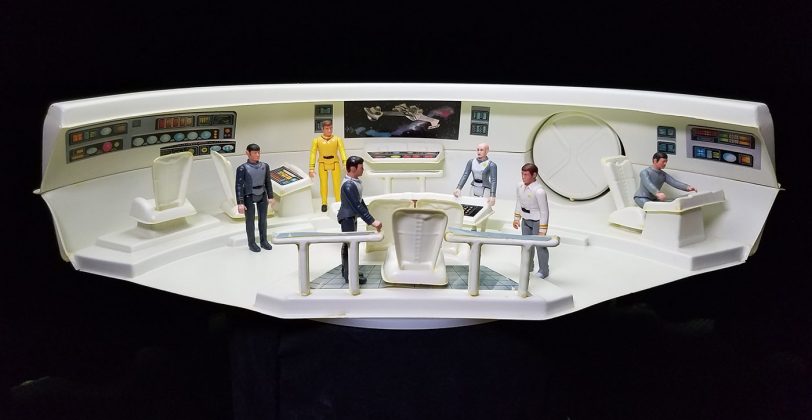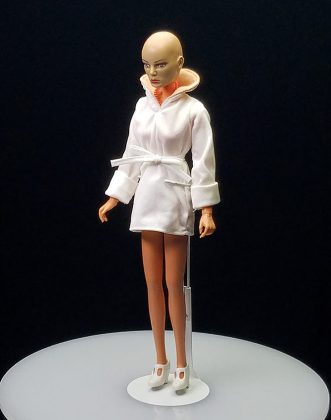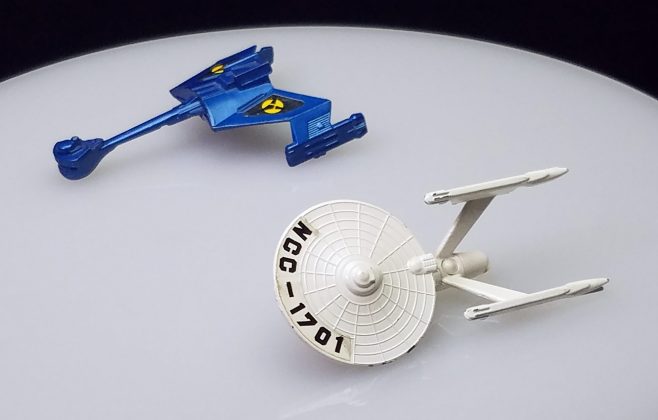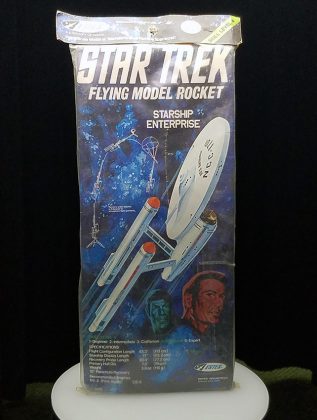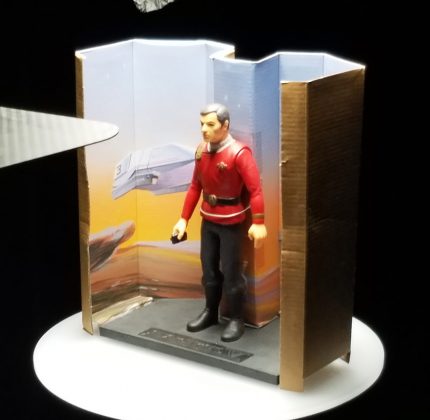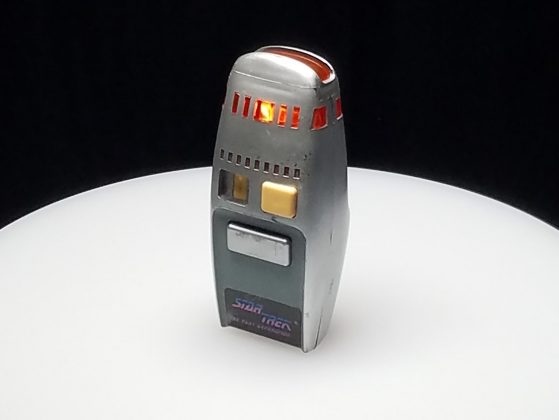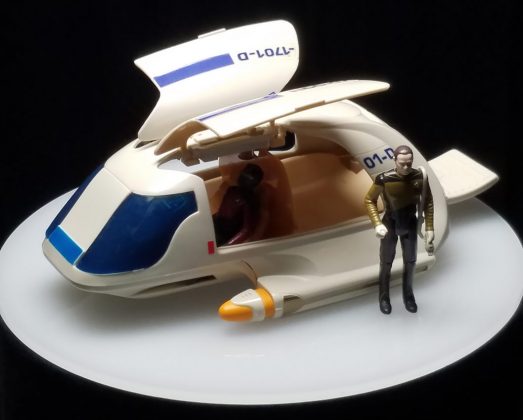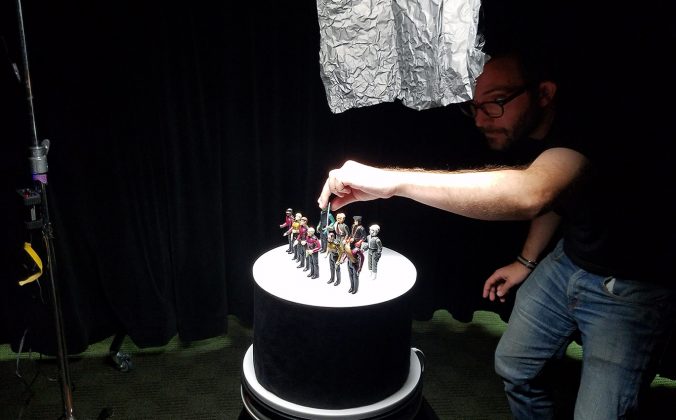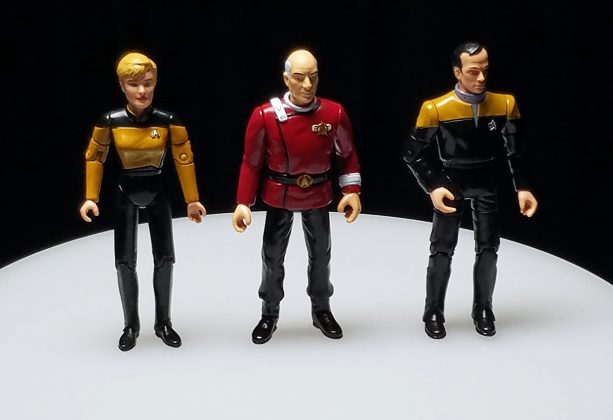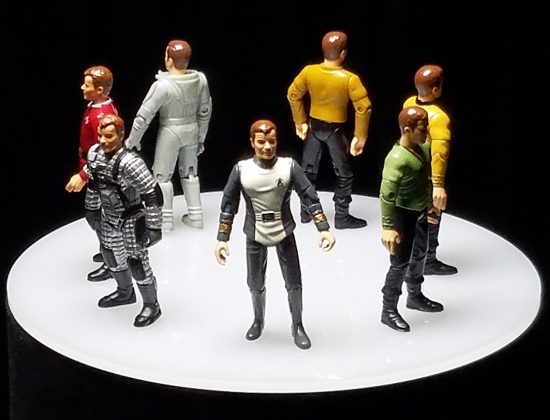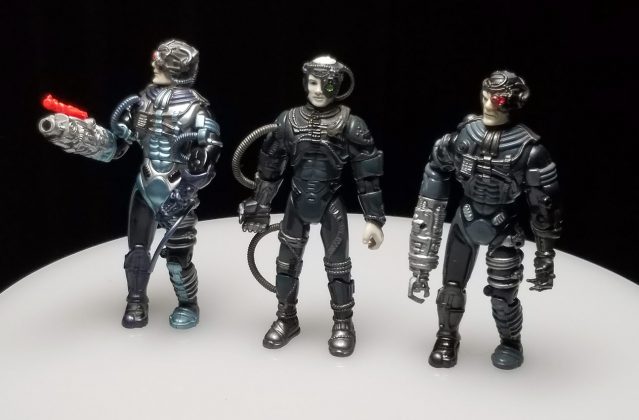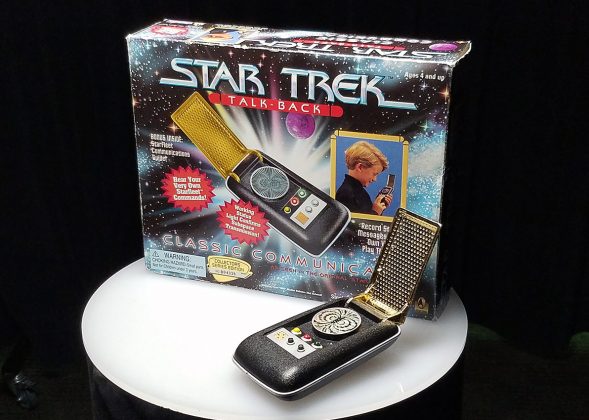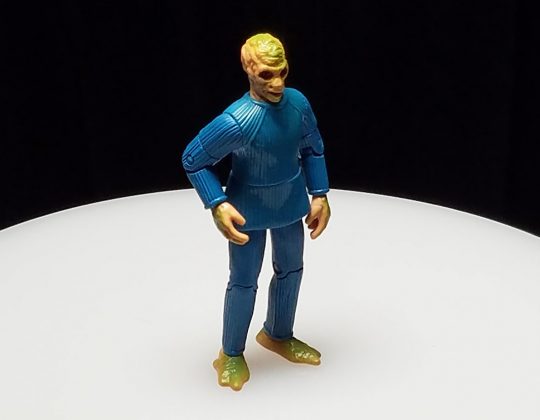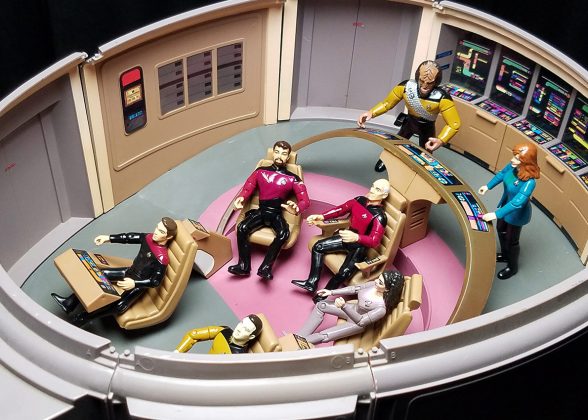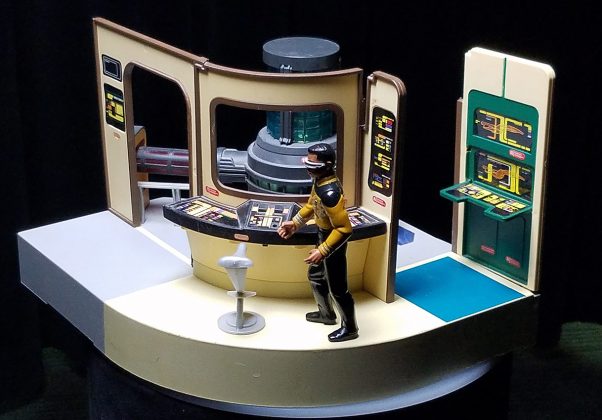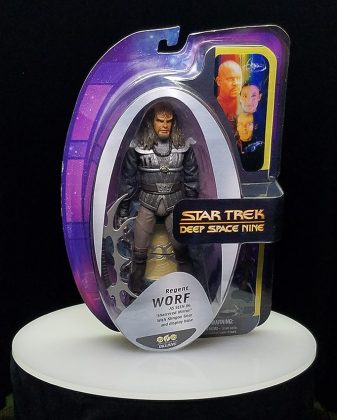Star Trek fans are collectors. From the earliest days of Mego’s classic Trek figures in the 1970s to the monthly Official Starships Collection model releases from Eaglemoss, Trek toys that have been been bringing a little piece of the United Federation of Planets into our homes for over 40 years.
Toy collector, Star Trek fan, and entertainment producer Brian Volk-Weiss has spent the last five years developing and filming a new documentary series, The Toys That Made Us, which debuted its first four of eight planned episodes on Netflix in December.
If you haven’t yet had the chance to catch up on this whimsical and insightful look back at some of pop culture’s biggest toy hits, here’s the trailer for the first four episodes of the series covering Star Wars, Barbie, He-Man, and G.I. Joe.
This spring, the next four episodes of The Toys That Made Us continue the documentary series, with features centering on Transformers, Lego, Hello Kitty… and Star Trek.
We caught up with Volk-Weiss this month to talk about the genesis of his series, his roots as a toy collector, and what Trek fans can look forward to when The Toys That Made Us: Star Trek debuts in a few months.
* * *
TREKCORE: Could you tell us about your background, Brian, and how you became so interested in toy collecting?
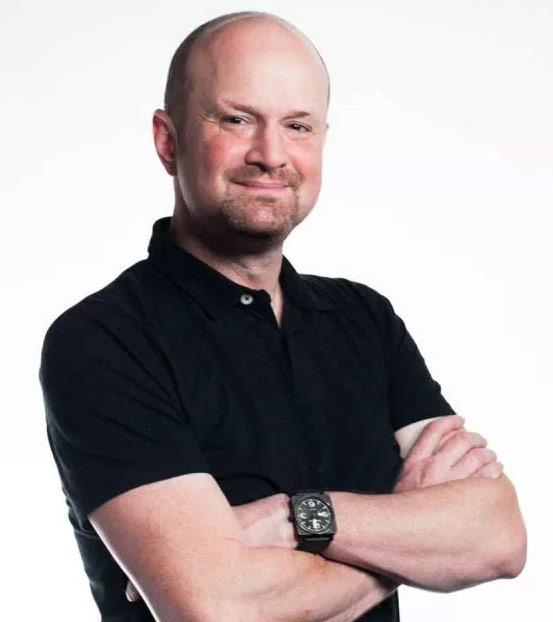 BRIAN VOLK-WEISS: It’s hard to talk about toys without talking about my first time watching Star Wars. I saw Star Wars when I was a little kid, and thought it was like a documentary – my mom started to get worried about me when I told her that I was going to join the rebellion when I grew up!
BRIAN VOLK-WEISS: It’s hard to talk about toys without talking about my first time watching Star Wars. I saw Star Wars when I was a little kid, and thought it was like a documentary – my mom started to get worried about me when I told her that I was going to join the rebellion when I grew up!
She bought me a “making of Star Wars” kids book, where it showed that the giant X-Wing fighters were actually tiny models, that C-3PO was really an actor wearing a mask, that sort of thing – and from that moment, I knew I wanted to be in show business.
Largely because of that, I had a lot of toys as a kid. Not just Star Wars, but also G.J. Joe and Transformers; I just always loved toys and played with them all the time. Even though I eventually stopped playing with them so much as I got older, I never threw them away, but began collecting them.
I would start putting up the toys I had, and even ones I never played with, up on the shelf, and over time the collection grew and grew and grew, where now I have about 500 or 600 toys in my collection.
TREKCORE: So how did your love of toys eventually become this Netflix series?
VOLK-WEISS: I’m a huge history buff, and I’m an avid reader of history. One day it dawned on me that while there are probably thousands of books on the Civil War, or Vietnam, or World War II, you really have to dig and research for hours to find anything out about something like the origins of Transformers.
Like, everybody knows who Optimus Prime is, right? Everybody knows about Cobra Commander. These are huge parts of pop culture history, so why is it so hard to find out anything about how they came to be? That was really the eureka moment for me, when I decided that I wanted to do a show about the history of toys.
My company does a lot of production on stand-up comedy specials, and as you may know, Netflix produces a lot of stand-up comedy, so I know a lot of people over there. I tried to sell The Toys That Made Us there and at other places – I came close, once or twice, to getting the show sold elsewhere over five or six years of trying – and I just kept talking about it.
It kind of turned into a joke; my buddies at Netflix would be like, “Oh, is Brian talking about that toys thing again? We’re here to talk about a stand-up special, Brian, we’ll give you two minutes to talk about the toys.”
Finally, after over a year, one of the executives over there eventually realized what I was trying to do, and decided that there would be a way to do it for Netflix. He gave me very detailed notes about how it could be done, what Netflix would want, and then I went out and shot a five-minute sample tape showing my vision for the show and how I could meet their requirements – and they loved it.
We developed an almost-30-page treatment for the show – that’s the longest treatment I’ve ever written in my career – and based on that, they green-lit the show for an eight-episode run.
TREKCORE: Your first episodes all focus on properties that were mostly managed by one company throughout each product line’s run, like Star Wars and Kenner, or Barbie and Mattel.
Star Trek is much different, as there have been so many different companies licensed to produce toys for the franchise over the last five decades. Where do you even being to start with such a wide range of subjects?
VOLK-WEISS: I found it fascinating – and you’re absolutely right – that Star Trek toys are really the opposite of all the other toy lines we cover. But more than that, I looked at them as the opposite of Star Wars toys.
In the Star Trek episode, we really compare and contrast the stories of those two toy lines – Star Wars for decades was literally owned by one person, George Lucas, who controlled the property [until the Disney acquisition in 2012]. Star Trek, on the other hand, was owned by Paramount – and now is split between both CBS and Paramount, which has been a bit of a licensing mess as recently as the J.J. Abrams films.
While Lucas didn’t have much of a problem with 20th Century Fox [who produced the films], Star Trek has two companies at odds over the property – plus, Star Trek was never the monster hit that Star Wars was. So even if Lucas didn’t have the contractual control over licensing that he did, Star Wars still the biggest movie of all time, you know?
Star Trek was always just barely getting through, with only a few exceptions. Even The Wrath of Khan, considered to be the best of the films, only did something like an $88 Million return on an $11 Million budget – a big hit, but not a $600 MILLION hit.
That’s something that really fascinated me, telling a story where streamlined control of the property really was not there, compared to the other toy lines our show covers, and we spent a staggering amount of time on it.
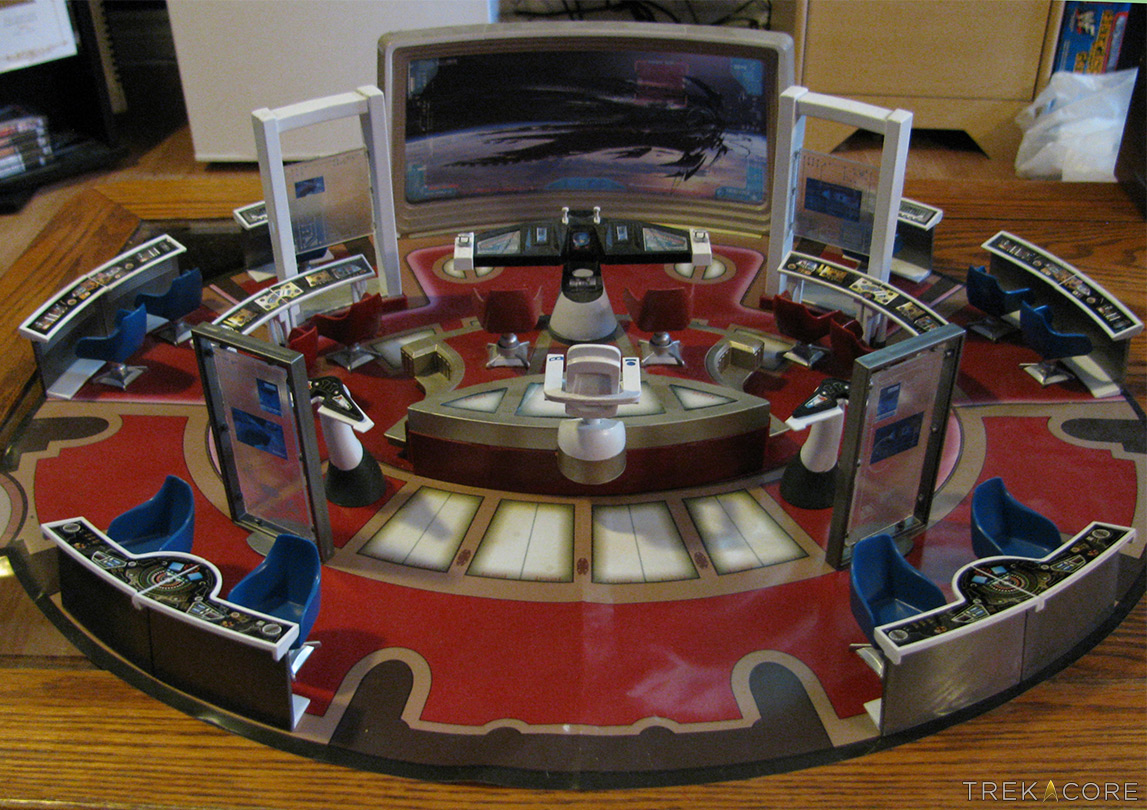
TREKCORE: Do you spent much time on the CBS-Paramount licensing divide, as you mentioned?
VOLK-WEISS: We touch on it a little bit, but here’s the thing – with our episodes we try to tell these stories with drama, but keep it interesting and make the drama fun, like in the He-Man episode.
TREKCORE: The whole segment with four guys all saying, “No, I created He-Man!”
VOLK-WEISS: Yeah. And the issue with licensing and the new films is so filled with minutiae and contracts and lawyers; it’s not a very exciting story. I mean, we don’t shy away from things, as we showed in the first four episodes, but this just isn’t that interesting of a story to tell.
TREKCORE: Well, then, let’s talk about the history fans can look forward to seeing in the Trek episode. Besides Playmates, what are the other Trek toy licensees you focus on? I assume Mego from the ‘70s, Galoob from the ‘80s?
VOLK-WEISS: We really cover it all, from Mego to McFarlane. We interviewed Marty Abrams at Mego three separate times; we met with all the Art Asylum and Diamond Select guys, which are kind of the same team now.
And yes, we definitely talked to Galoob, oh my God. Those guys are the funniest people in the world. Star Trek was a huge disaster for them!
TREKCORE: Oh, for sure! Our team talked to Jim Fong and Bob DiGiacomo from the Galoob team a few years back for a Star Trek: The Next Generation toys retrospective and they had some of the most interesting stuff to share.
VOLK-WEISS: I read that series! And you know, from the standpoint of talking about it 20-plus years later, I really love what the Galoob team made. Just a few months ago, I got one of their unreleased Wesley Crusher prototypes – and it’s on a Jean-Luc Picard backing card!
That’s how much I love the Galoob toys, because those are the ones I played with as a kid. I was born in 1976, so the first Enterprise I had was their die-cast Enterprise-D.
Aside from all older groups, we also went out to Arizona and met with Todd McFarlane and the McFarlane Toys team, who has the new license for Star Trek: Discovery along with all the other shows. They’re doing those new Kirk and Picard special figures this year.
Plus, we went back to the beginning, really, and interviewed Bjo and John Trimble too, and Rod Roddenberry as well.
TREKCORE: What about the wacky Remco/AHI releases from the 1970s, those toys that have nothing to do with Star Trek, really, except for the label on the box?
VOLK-WEISS: Oh yeah, we absolutely do. That helmet with the flashing red alarm and everything, yeah, we get into that a lot. We interviewed Doug Drexler, and he’s so funny about those things.
We definitely get into the weird stuff, that I never owned growing up – but now I have a pretty nice collection, like the weird Enterprise where the saucer is a fan and it’s on that strange pedestal. I got one of those.
TREKCORE: One of the attendees to the annual Las Vegas Star Trek Convention actually made his own ‘Spock Helmet’ from scratch last summer, it was a huge hit.
VOLK-WEISS: Please send me those photos! [Laughs] You know, if you’ve seen the first four episodes, we use a lot of humor and comedy in the storytelling. It’s not just some dry history lesson – and thanks to those weird products, there’s a lot of comedy in the Star Trek episode.
TREKCORE: We’ve touched on the less-successful Trek product lines, but as far as Star Trek toys go, Playmates is king; they basically ruled the 1990s. Why do you think they were so successful compared to the other licensees?
VOLK-WEISS: Well – and this was my opinion even before we began to make the show – it was clear that the people making the toys at Playmates really loved Star Trek. The love they put into their figures, and accessories, really showed and you just had to have those toys.
They made over 400 different Star Trek releases, by the way. Even Star Wars, the original Kenner line, didn’t break 100 releases! And even with that many releases, I thought I’d seem them all, or at least heard about them, but then I heard about this limited run of special Picard figures from “Tapestry,” where he’s wearing the movie uniform.
TREKCORE: Ah, yes – the “1701 Collection” limited editions.
VOLK-WEISS: Yes, right! And “Tapestry” is one of my favorite episodes, so once I heard about that figure, I spent months obsessing about it until I was finally able to get one. And that’s what made Playmates so successful – you know, like, how many of those figures were you going to sell? 5,000 at the most?
But that’s what they did. There was just so much love; even a character you might not have been a big fan of could have a figure that would catch your interest. And they had a lot of humor in their toys, too, you know, especially with the accessories. They clearly loved their products.
TREKCORE: You mention that “1701 Collection,” which were three figures that had very limited runs. Do you spend much time on rarities or prototypes, that kind of thing?
VOLK-WEISS: Well, as a rule in our series, we don’t really get into that. The first cut of the Star Wars episode, for example, was almost two-and-a-half hours long.
Have you heard of Vlix, which is the most hard to get, most valued production figure in all of Star Wars? It’s based on a character from the failed cartoon series, and was never sold in the US. It was produced and sold in Brazil for like three months, and that was it – and now those figures are worth $20,000 to $40,000 each.
In the first cut of Star Wars, we had a seven-minute sequence just about Vlix. Our executive at Netflix as like, “Well, it’s your show… but if you have any hope of making any more of these, you should probably cut the seven minutes of Vlix and try to keep these shows under an hour.”
To you and me, you know, we care about those rarities, but honestly, most people don’t – and the whole goal of the show is that someone like us could watch an episode and love it, but someone like my wife, who doesn’t care at all about Star Trek, would enjoy it just as much. So in order to do that successfully, we don’t spend time on the rarities.
TREKCORE: That’s fair – you can’t focus just on the die-hards when you’re making the show.
VOLK-WEISS: But like I said, we do cover SO much in the time we spend on each toy line. My favorite feedback is when I hear something like, “I didn’t plan to watch the Barbie episode, but people told me too and I ended up loving it,” or “I’ve been a Star Wars fan for 35 years and you had stuff in that episode I didn’t know about.”
TREKCORE: Do you plan to release any of those cut sequences, like the seven minutes of Vlix, through separate means outside of the Netflix release?
VOLK-WEISS: Well, we have been putting out some of the cut scenes on our social media feeds, so that’s something to watch – but there’s not a plan right now for any DVD release or anything like that.
TREKCORE: But in terms of rare content, though, I assume you’re including the period Star Trek toy commercials from Mego and Playmates and the like, like you did with the classic Barbie and G.I. Joe ads?
VOLK-WEISS: Oh my God, yes!
TREKCORE: What about some of the other well-known Trek collectibles, like the annual Hallmark ornaments – do you touch on them at all?
VOLK-WEISS: No; we had some thoughts on those but they didn’t make it to the final cut – but I probably have like 90% of those ornaments in my collection!
I even have, from when the old Galileo shuttle came out, one of the sales displays they used to have in stores. It’s this big plastic moon, with a shuttle coming out of it, and when you press a button Leonard Nimoy talks. It’s gut-wrenching not to include that stuff, but we only have so much time.
I’m surprised you haven’t asked about Eaglemoss!
TREKCORE: Well, honestly, Eaglemoss’ starship models don’t really get thought of as toys – they’re more like display pieces, really, and I wasn’t sure they’d be on your radar for the documentary.
VOLK-WEISS: Well, you’re right – but we definitely have it as part of the show! We don’t get into it that deeply, but I literally have a list of Eaglemoss ships I need to get for my collection taped here on the wall next to me.
I just crossed out the Springfield-class and the USS Phoenix, but I need to get the Challenger-class, the Freedom-class, the USS Bozeman, the Enterprise-C Probert concept, the Phase II Enterprise, the XCV-330 [ringship]… I spend a fortune on these things!
From my list, you can probably tell I only by the Federation ships, mostly, but honestly – some of these show, I cannot believe they’re even being made.
TREKCORE: Yeah, we’ve talked with Ben Robinson, who runs that series, a few times, and they certainly keep coming up with ship designs nobody ever would have expected to be brought to market.
VOLK-WEISS: That prototype version of the USS Voyager is coming out this year, too, right? They have made models of stuff I literally cannot believe. Like the Bozeman — “Cause and Effect” is like my third-favorite Trek episode ever. Like, how many Bozemans are they going to sell? Or all the ships from Wolf 359 that appeared half-on-screen for two seconds.
I’m not sure how they are making money, but they must be because I’ve bought every single one of them and they keep expanding how many ships they’re going to do. It’s just fantastic. I actually have one of the original, screen-used worker bee studio models from Star Trek: The Motion Picture – and now I have the Eaglemoss version, too.
TREKCORE: Finally, Brian — the four episodes that debuted in December – Star Wars, Barbie, G.I. Joe, and He-Man – are some of the most iconic and widely-known toy properties over the last several decades.
With other mega-hits like Lego, Transformers, and Hello Kitty coming in your 2018 episodes, how did a comparatively-small toy property like Star Trek find a place in your series?
VOLK-WEISS: One of the things that has made Netflix amazing to work with on this project is that they really trusted me, as a toy lover, to manage the project how I wanted. Seven of the eight episode topics really were obvious choices, true – nobody could argue with including Transformers or He-Man, you know?
While some people have asked why we didn’t do Teenage Mutant Ninja Turtles or My Little Pony – and if I get the chance to do more episodes, I’m sure we will – there were definitely questions about why we did an episode on Star Trek, because Trek toys never really worked, and they certainly weren’t really played with like Star Wars or G.I. Joe.
Even Playmates, which like we discussed, had the most successful Star Trek line there ever ways, had more collectors buying their toys than younger kids. Like, there weren’t that many six-year-olds playing in their parent’s den, having Salamander Tom Paris fight Romulan Tasha Yar, right?
We’ve been getting criticism for doing a Star Trek episode, but I’m a Star Trek fan, and I had Star Trek toys, and I was lucky enough to sell this show to Netflix and don’t know if I’ll ever get to do any more — so I said, “You know what? Screw it – we’re doing a Star Trek episode.”
I’ve got eight shots, and I’m using one for Star Trek!
![]()
Check out this gallery of Trek toys that collector and fan Professor Wesley G. Willison shared with Brian and the Toys That Made Us team — and shared with TrekCore as a companion to this interview — which will serve as photographic interludes during the Trek episode, from the earliest Star Trek: The Motion Picture toys through the Playmates heydey and beyond!
The second half of The Toys That Made Us, including the upcoming Star Trek feature, is due from Netflix in Spring 2018 — and as soon as the streaming service has announced the official release date, we’ll bring you all the details here.
In the meantime, you can also follow The Toys That Made Us on their Twitter or Facebook feeds for behind-the-scenes insights, deleted scenes from the first episodes, and more.

